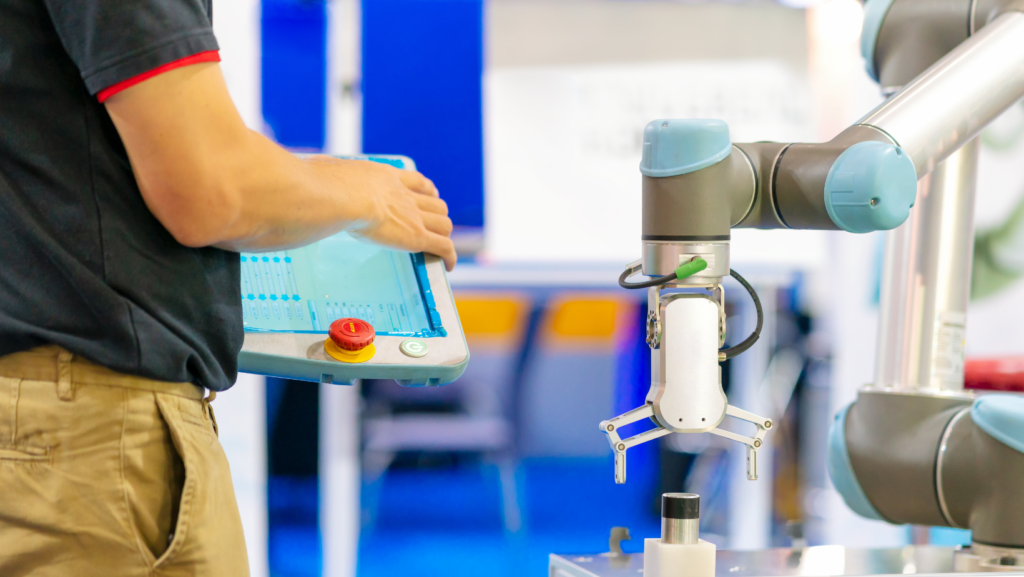By Dan Timoldi
If you’re a small or medium manufacturer who has been considering introducing more automation to your processes, but are worried you don’t have the time, space, or money; it may be time to consider cobots. Collaborative robots, also known as cobots, are a type of robotic system designed to work alongside humans in a shared workspace, and they are one of the biggest trends in manufacturing at the moment. Unlike traditional industrial robots, which are typically placed in protected work cells or restricted areas, cobots are specifically designed to safely interact with human operators.
Cobots have force-sensing capabilities that allow them to detect contact and react accordingly, such as slowing down or stopping their movements to prevent injury. Some cobots also have soft and rounded exteriors to minimize the risk of accidental collisions. They are designed to be user-friendly and easy to program, even for individuals without extensive technical expertise. Many offer intuitive interfaces and graphical programming tools allowing operators to teach the robot tasks. This simplifies the setup process and makes them approachable to a wider range of operators.
Cobots are highly flexible and can be easily reprogrammed or repositioned to perform different tasks. They are often equipped with multiple-axis robotic arms that can mimic human movements, providing dexterity and adaptability. Cobots can handle a diverse range of tasks such as assembly, pick and place, packaging, quality control, and machine tending. They can operate alongside humans on the same production line or workstation, performing tasks in collaboration with human workers. This allows for close interaction, coordination, and flexibility in manufacturing processes.
Collaborative robots have gained popularity in various industries, including automotive, electronics, healthcare, food and beverage, and many more. They can be seen on Amazon order fulfillment floors, dosing and packaging pharmaceuticals, or even preparing guacamole at Chipotle! Cobots offer the advantages of improved productivity, increased efficiency, and reduced physical strain on human workers. Cobots enable businesses to automate repetitive or physically demanding tasks while maintaining a safe and collaborative work environment.
Cobots are generally more affordable and accessible compared to traditional industrial robots. They are designed to be cost-effective for small and medium-sized enterprises (SMEs) that may have limited budgets or lower production volumes. For one, their smaller scale makes them more affordable to produce and also means they are taking up less valuable space on the manufacturing floor. The reduced cost and simplicity of cobots opens automation opportunities for businesses that may not have previously considered robot integration.
Collaborative robots are highly scalable, meaning that businesses can start with a single cobot and gradually expand their automation capabilities as needed. This scalability allows for incremental automation adoption and cost management. Manufacturers who want real Return on Investment (ROI) that addresses the need for labor while balancing profitability will see that cobots make financial sense.
To be truly successful as a manufacturer, you must be willing to remain agile and open to new technologies. If you’ve been searching for ways to add automation to your manufacturing processes, now is the time to find the right cobot for your business. If you need help with any of the services discussed in this blog, reach out to us today! To set up a complimentary visit to discuss in further detail, please call our Director of Operations, Phyllis Levine, at (845)391-8214 Ext. 3001 or via email to phyllis.levine@hvtdc.org to set up a complimentary visit.
